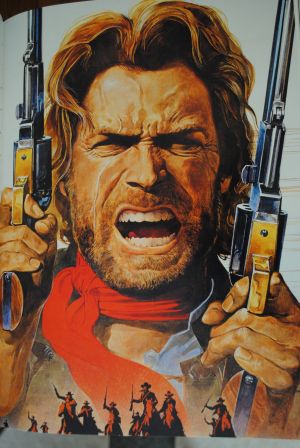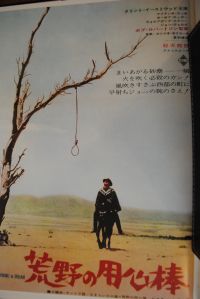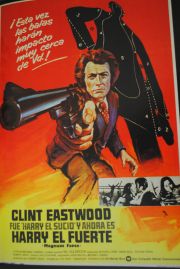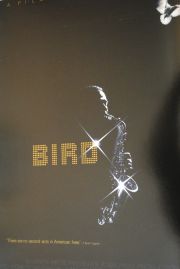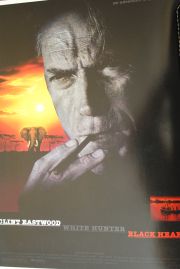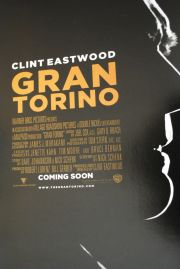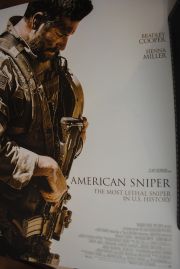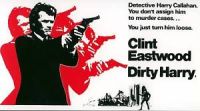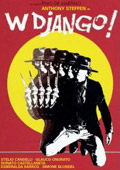Book review - Clint Eastwood: Icon: The Essentical Film Art Collection
- By David Frangioni, with essays by Thomas Schatz
- 1st released 2009; 3rd edition May 2018 – an expanded and revised edition
- Hardback, 240 pages, 23.5 x 32.4cm
- Front/back cover – from ‘The Enforcer’
- Outer sleeve – colour images from ‘The Outlaw Josey Wales’
- Clint Eastwood: Icon: The Essential Film Art Collection (book page)
INTRODUCTION
The book includes over 400 pieces of film art (posters, lobby cards, ads, banners etc.), including rare items, from every major Clint Eastwood movie from the lifetime collection by the author. It is of special interest to both Clint Eastwood and movie art fans. The book is heavy on poster art and light on text. The movie posters come from all over the world: from Argentina to Japan. The book serves as a retrospective of Clint’s film career and a visual history of the many genre movies that he was involved in. The changes in the visual art reflects the changes in the films, genre, actor, director, Clint’s age and maturity.
The author outlines Clint’s career from the ‘Rawhide’ TV series to the Spaghetti Western trilogy to the ‘Dirty Harry’ movies to the present day. The release of Leone's spaghetti western trilogy in the USA in 1967 helped to elevate Clint’s movie career. The influence of Leones Spaghetti Westerns can be seen in later Clint movies especially in the iconic hero image.
The success of Clint as an actor/director has been helped by long-term collaborations especially with Warner Bros and with one of the top poster artists, Bill Gold. Clint formed the Malpaso film company after his Spaghetti Western trilogy success – a move that added to his long-term success and allowed him more control over his movies.
MAIN BODY
The book displays of range of movie posters from each decade from the 1960’s up to the 2010’s. The images come in a range of sizes including full page size - all are in colour. Below are snippets from the book, ordered by decade. Click the previews to enlarge
1960’s The artwork in this era developed from an abstract iconic figure with trappings (cigar, poncho, hat, stubble, pistol) to a more character based image. ‘The man with no name’ title was developed for the USA release of ‘A Fistful of Dollars’.
1970’s ‘Dirty Harry’ was a watershed movie for Clint – it saw the first of 3 dozen consecutive film posters by Bill Gold. Clint had changed to a modern setting with a dress code and a big gun – he was now a solo star. This era also saw a change to different genre with ‘Every Which Way But Loose’ (the biggest success to date) and ‘Escape from Alcatraz’. Guns were noticeably absent in these movies. There were also 3 movies involving conflicts with women: ‘Two Mules for Sister Sara’, ‘The Beguiled’ and ‘Play Misty for Me’. The movie ‘Breezy’ was the first that Clint directed without starring in – the poster art also differed.
1980’s This decade started and finished with comedies – the poster art came across with Clint as a more laid-back – now in his 50’s. This was a productive and successful decade for Clint. Clint widened his genre with ‘Bird’ and 2 war-related dramas: ‘Firefox’ and ‘Heartbreak Ridge’. There was also a return to cop movies and guns (less prominent now). ‘Pale Rider’ did see a return to old western and guns – with Clint as the hero. Earlier poster art here was notably darker.
1990’s The artwork of this decade is different – guns/action/violence are all gone (except for ‘Unforgiven’). It conveys a more mature filmmaker with more dramatic and heavier film material. The artwork has a consistent and distinctive style, based on Clint’s artistic interests and the continued collaboration with Bill Gold. The key characteristics of the artwork are: deep black background/close-up of Clint/a moment from the film in bright colours/sunsets. 3 films break with this style with Clint not central to the artwork and not a central character in the movie: ’A Perfect World’, ‘The Bridges of Madison County’ and ‘Midnight in the Garden of Good and Evil’. In ‘Unforgiven’, Clint shares the poster with other stars.
2000’s Clint in his 70’s still has a high movie productivity and success rate with four Oscars. He made four appearances – tw as the star. Bill Gold retired in 2004. Two war movies saw a new poster style. Fewer faces are visible in the 2000’s/2010’s posters and some posters give no indication of movie genre. The strategic absence of poster info shows Clint’s confidence in his own work.
2010’s Clint directed five movies and starred in one of these. He now prefers dramas and character studies. A feature in this decade is Clint working with top stars. Some of these movies were disappointing while ‘American Sniper’ a great success. ‘Sully’ was Clint’s biggest success to date. The poster art is missing Clint’s image and his name is less prominent. The visual style remains with darkness/lightening prominent. ‘American Sniper’ artwork is striking as it shows a marksman with the gun pointed down. ‘Trouble with the Curve’ shows a scout at the end of his career, leaning on a fence at sunset.
COMMENTS
I have always wondered if Clint learned from the use of a pool of actors in the Spaghetti Western era and applied a similar approach, especially in his earlier movies – Sondra Locke, Bill McKinney, Morgan Freeman etc.
Another aspect that Clint may have picked up from Spaghetti Westerns is the less prominent role of women. This is especially seen in the ‘Dirty Harry’ movies with the male macho image that is portrayed by Harry Callaghan. However, as the author David Frangioni mentions in his book, Clint directed several movies that have strong female roles. (‘A Fistful of Dollars’ also had a strong female role with Marianne Koch).
Movie poster art is part of the complete movie package as is the DVD cover art. When I rate a Spaghetti Western (and other movies), as well as looking at all the usual aspects (actors, story, location, music, animated opening credits etc.), I look at the DVD covers and have even purchased DVD’s based on the DVD cover art.
The ‘Dirty Harry’ poster art (page 86), with a staggered image effect, reminds me of the ‘W Django!’ (A Man Called Django!) DVD cover.
For me, one of the most unusual posters featured in this book is from ‘The Gauntlet’ (page 147) - the poster is more like a design for a comic book or a Marvel movie.
The change in the poster artwork towards more darker images and more reflective material reminds me of the last few music albums by Leonard Cohen where the lyrics became darker as Leonard got older.
THE VERDICT
This book is perfect for Clint Eastwood fans and fans of movie art. It provides a visual retrospective of Clint’s movie career with film art from the lifetime collection of David Frangioni. Highly Recommended!
by MMcG, 2018
